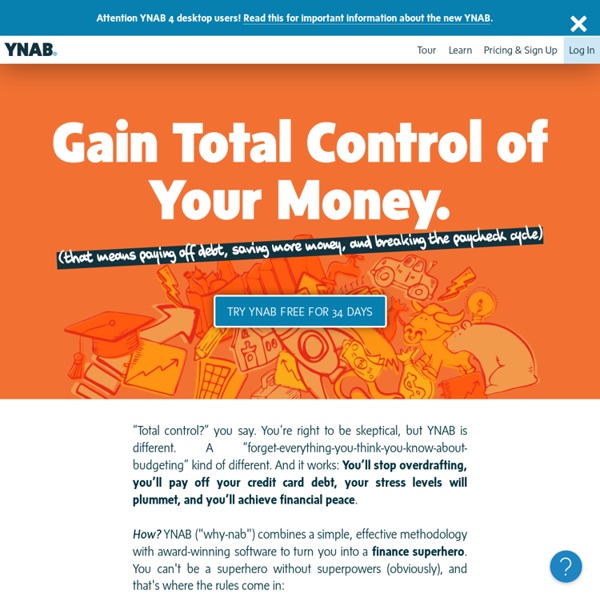



Crédit Agricole Alsace Vosges - Services de banque en ligne Everything You Ever Really Needed to Know Ab A few days ago, I had lunch with an individual who is considering hiring me to give a multi-hour seminar to a business convention on personal finance. This person knows me from the local community and is a reader of The Simple Dollar and he felt that I might be the right person to give such a presentation. During the lunch, out of the blue, he asked me to give a five minute nutshell version of what I would present to the group. I thought for a minute, pulled a pen out of my pocket, and asked him for five business cards. I saved the business cards, scanned them in, and thus, for your enjoyment, is my presentation (with some extensive helper notes so you can know what I was actually saying while drawing these cards). 1. In the end, this is the fundamental rule of personal finance: spend less than you earn. There are two avenues to achieving this goal: spending less and earning more. 2. So how does one earn more? 1. 2. 3. 4. 5. 6. 3. 1. Food is a great example of this. 2. 3. 4. 4. 1. 2. 3.
The One Hour Project: Create A Visual Debt R This post is part of The One Hour Project, in which you can spend just one hour to put your finances in a better place without a big lifestyle change, through frugality or other financial choices. Keeping your focus on getting out of debt can be a challenge for some people. It’s so incredibly easy to just not think about it at all and make a bad financial choice, like putting something unnecessary on the credit card or going out for an expensive dinner and drinks. One of the most effective tools I use to remind me of my progress is a visual debt reminder. The inspiration One form this might take is an image of that which is inspiring you to become debt free. The goal If you have a specific goal in mind, you might also want to include a picture of this goal. The progress bar You might also want to construct a progress bar that shows your progress as you move from your current debt total to zero. What I did for myself was combine different elements.
The 10 Key Actions That Finally Got Me Out of Debt; or, Why Livi Post written by Leo Babauta. This month, I paid off the loans for both my vehicles! I am debt free! After focusing on getting out of debt for so long (a few years now), becoming debt free is a wonderful and amazing feeling. It wasn’t easy — my wife and children and I all made sacrifices. And unlike the common misconception about getting out of debt, it took more than frugality. Background Let’s take a little trip back in time and see how I got into debt to start with. After a divorce, I came out debt free. Then I entered a period that I like to call “frugal irresponsibility”. The next period was one where I was crippled with debt, as well as trying to survive on a single income with no medical insurance. The most recent period has been my turnaround. You won’t be able to replicate what I’ve done exactly … everyone has to deal with their situation in their own way … but my hope is that you’ll be able to glean something from my experiences. 1. 2. 3. Anyway, the spending plan is essential.
Zen and the Art of Item Replacement My family has only one television in the house, and it is primarily used for playing Wii games. It’s an enormous, extremely heavy old 32″ television, bought when I was in college and now approaching ten years old. In all four corners, the screen has begun to turn faintly blue, and it shows up particularly well on a white screen, as the cloudiness covers a good portion of the screen. Not too long ago, I would have insisted on replacing this immediately, but in all honesty, it doesn’t interfere with any of our usage of the television. Quite frankly, some of our friends and family think this is weird. The real truth of the matter is that my wife and I have started to follow a set of unwritten rules about when and how to upgrade or replace the items that we have now. Rule #1: If it isn’t broke, don’t replace it. Rule #2: When we do replace something, we replace it with long term quality and reliability. Rule #4: No item is upgraded unless we both agree on the need for the upgrade.
52 Books, 52 Weeks: The Top Ten Over the past year (starting in November 2006), I read a personal finance book each week and wrote a lengthy review of each one, a series which I completed just a few days ago. Now comes the fun part – comparing them, ranking them, and figuring out what I learned from them as a whole. My first task? Trying to rank all of the books that I read. How do you rank them when they’re so diverse? Did the book make me think while reading it? As I went through the books and thought about these questions, a rough ranking of the books became pretty clear. What sets the top ten apart? So, without further ado, here are the top ten out of that mountain of books. 1. This shouldn’t surprise my regular readers at all, as not only have I reviewed the book, I’ve also talked about how it changed my life and discussed it in incredible detail in the inaugural version of The Simple Dollar Book Club. 2. 3. This is the single strongest investment book I’ve ever read for the individual do-it-yourself investor. 4.